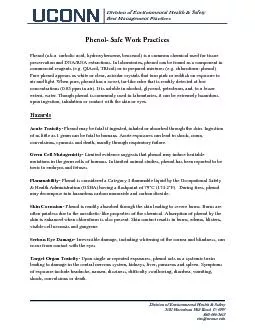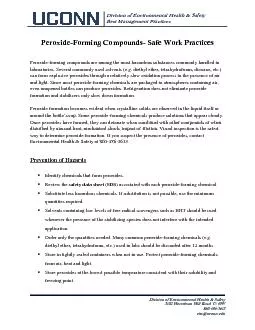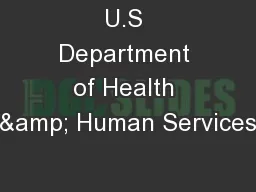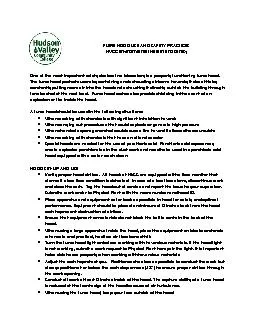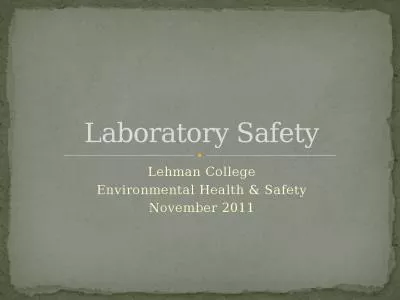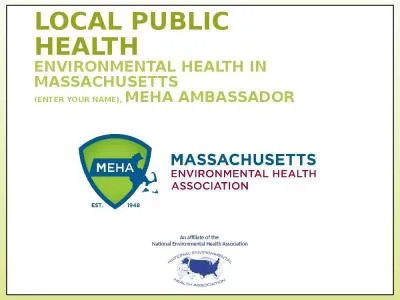PDF-Division of Environmental Health & Safety
Author : jane-oiler | Published Date : 2016-07-08
Best Management Practices Division of Environmental Health Safety 3102 Horsebarn Hill Road U 4097 860 486 3613 ehs uconnedu Phenol Safe Work Practices Phenol
Presentation Embed Code
Download Presentation
Download Presentation The PPT/PDF document "Division of Environmental Health & Safet..." is the property of its rightful owner. Permission is granted to download and print the materials on this website for personal, non-commercial use only, and to display it on your personal computer provided you do not modify the materials and that you retain all copyright notices contained in the materials. By downloading content from our website, you accept the terms of this agreement.
Division of Environmental Health & Safety: Transcript
Best Management Practices Division of Environmental Health Safety 3102 Horsebarn Hill Road U 4097 860 486 3613 ehs uconnedu Phenol Safe Work Practices Phenol aka c arbolic acid hydr. Safety Break Safety Break Safety Break Safety Break Safety Break Safety Break Lap Swim (2) Open Swim (2) Lap Swim (2) 10:00am-4:25pm Open Swim (2) 12:10pm-2:30pm Safety Break Safety Break Safety Bre Best Management Practices Division of Environmental Health & Safety 3102 Horsebarn Hill Road U - 4097 860 - 486 - 3613 ehs@ uconn.edu P eroxide - Forming Compounds - Safe Work Practices P eroxide - f Indian Health Service. Office of Environmental Health & Engineering. Environmental Health Services Overview. “Through shared decision making and sound public health measures, enhance the health and quality of life of all American Indians and Alaska Natives to the highest level by eliminating environmentally related disease and injury.”. Objectives. Describe environmental public health. Discuss environmental public health surveillance. Describe types of environmental public health data . Discuss laws and regulations on environment and health data. Always wear splash goggles, and usea full face shield if there is possibility of an explosion or eruption. Wear gloves appropriate for the materials being used.Do not make quick motions into or out o Determine the appropriate levels of training required for each employee and verify that the required training has been completed Ensure consistent policy implementation and reinforcing LOTO rules Cont National Safety Council collaborates with world-class performers in EHS across industry sectors and regions of the world Applicants are to submit the requested information in sections 1 4 this informa Your . Classroom . Nancy Sedlacek. Jay Young. Marilyn Hair. Center for . Ecogenetics. and Environmental Health. University of Washington. October 19, 2015. Presentation Overview:. Artifact Exercise. Oklahoma State . University . Environmental Health & Safety Dept. . (405) . 744-7241 . Killer Safety Attitudes. OSU. . Environmental Health & Safety . . What's really broken. ?. In . many cases what’s broken or. November 2011. Laboratory Safety. 2. Introduction. Regulatory agencies and laboratory safety. Occupational Safety & Health Administration. New York State Department of Labor Public Employees Safety & Health. Department of Epidemiology, Research . and Public Health. Sheryl Goodson. Michael Peercy. Bobby Saunkeah. Susan Alexander. Kent Denson, MD. . . Objectives:. Understand the roles of tribal research programs in Indian Country.. (enter your name), . MEHA Ambassador. An affiliate of the . National Environmental Health Association. Topics to be Covered. The US Public Health System. Federal. Tribal. State. Local. County. City. Town. in Somalia. Abdirizak Mohamud Yusuf, B.Sc. MPH. MSc. . Contents . Introduction . Previous outbreak. Environmental Health Impact. Inter-sectoral impact in One Health. Role of Environmental Health Professionals . . Division of Environmental Health Epidemiology. Bureau of Epidemiology. Pennsylvania Department of Health. Objective. Identify information and resources available to K-12 educators for effectively teaching environmental health .
Download Document
Here is the link to download the presentation.
"Division of Environmental Health & Safety"The content belongs to its owner. You may download and print it for personal use, without modification, and keep all copyright notices. By downloading, you agree to these terms.
Related Documents

